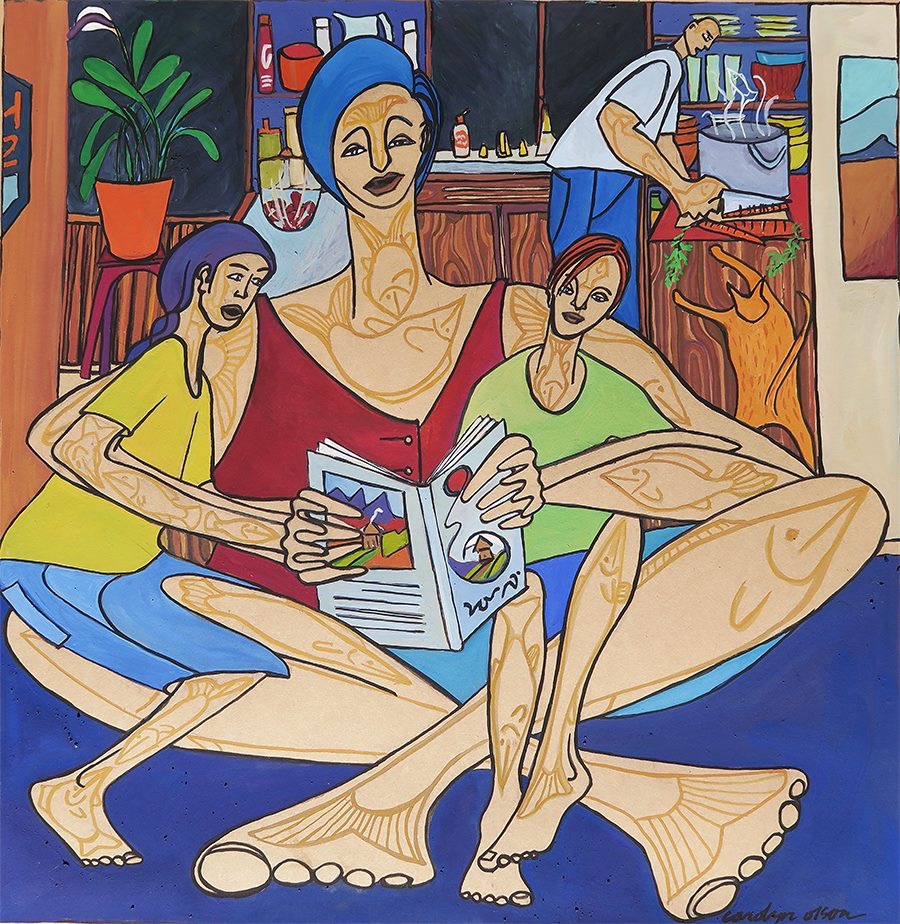
05 Apr Reclaim, Repurpose, Reimagine
Over the years we’ve done a few invitational shows focused on a theme (“Vanishing Landscape,” “Black-and-White,” “It’s About the Bees” and “We All Live Downstream,” a box show, tile shows, wearable art, etc.). Looking at the schedule for the coming year, we decided it was time to do a group show again.
This year we’ve chosen the theme, “Reclaim, Repurpose, Reimagine,” with a focus on the environmental impact of non-degradable materials, most notably plastics. Plastic pollution—including microfiber pollution—is increasing at alarming levels, threatening our oceans, our food supply and our health.
The statistics are startling. Humans have produced enough plastic to cover Argentina, the eighth-largest country in the world, 10 inches deep. Of the 8.3 billion tons of already-produced plastic, 6.3 billion tons have already become trash. Plastic production, which has doubled every 15 years, outpaces every other kind of man-made material, and half of it becomes trash in less than a year.
For “Reclaim, Repurpose, Reimagine,” which opened April 4, artists were asked to consider plastic and its alternatives. Can a pottery jar take the place of a plastic container? Can discarded materials be woven, stitched or incorporated into new items? Can the pristine landscape of our imaginations find balance with the reality of environmental degradation? Can art offer information, inspiration and creative alternatives?
The exhibit continues through April 29, and includes an Earth Day reception on Saturday, April 21 from 2-5 p.m.
Felt artist Kristen Anderson (Bigfork, MN) was inspired by the discovery that three organisms have mutated to digest plastic. “Working in felt allows me to explore my curiosity with the natural world,” she said.
Judith Bergerson (Sartell, MN) created mixed media collages from litter and discarded materials found in the street and elsewhere.
For potter Karin Kraemer (Duluth, MN) clay is an obvious substitute for plastic! Her signature angler fish design speaks to the adaptation of the fish to its environment, while contemplating the future health of our oceans. Scientists estimate that by the year 2050 there will be more plastic in the oceans than fish.
For her shadowbox, “The Transformation of Discarded Objects,” Tracy McMan (Inver Grove Heights, MN) transformed small “doodads” (remnants of discarded toys, packaging, containers, etc.) with handmade paper.
Carolyn Olson (Duluth, MN) was thinking about the proliferation of microfibers in our waterways, and ultimately in our food and bodies, when she painted “Reading Near the St. Louis River.”
Printmaker Anna Marie Pavlik (Frankfurt, KY) was inspired by face jugs used by moonshiners—traditional ceramic containers that predate plastics.
Image: “Reading Near the St. Louis River,” painting by Carolyn Olson, Duluth, MN.




Sorry, the comment form is closed at this time.